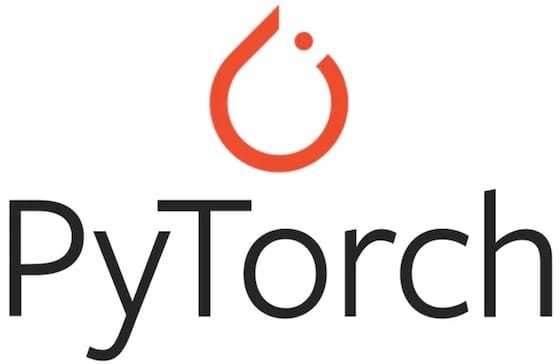How To Install PyTorch on Debian 12

PyTorch is a popular open-source machine learning library that provides a flexible framework for building and training deep learning models. Its dynamic computational graph and extensive support for GPU acceleration make it a favorite among researchers and developers alike. This article will guide you through the process of installing PyTorch on Debian 12, ensuring that you have all the necessary tools and configurations to get started with your deep learning projects.
Introduction
With the rise of artificial intelligence and machine learning, having a robust framework like PyTorch is essential for developers and researchers. Installing PyTorch on Debian 12 can be straightforward if you follow the right steps. This guide will cover everything from prerequisites to installation methods, including GPU support, verification of installation, and troubleshooting common issues.
Prerequisites
System Requirements
- Minimum Hardware Requirements:
- Processor: 64-bit CPU
- RAM: At least 4 GB (8 GB recommended)
- Disk Space: Minimum 10 GB free disk space
- Recommended Specifications:
- Processor: Multi-core CPU
- RAM: 16 GB or more
- GPU: NVIDIA GPU with CUDA support (optional)
Software Requirements
- Python Version: Ensure you have Python 3.6 or later installed on your system.
- Pip: The Python package manager must be installed for package management.
- Virtual Environment (Optional): It is advisable to use a virtual environment to manage dependencies.
Updating the System
Before starting the installation process, it’s crucial to ensure your Debian system is updated. Open your terminal and run the following commands:
sudo apt update
sudo apt upgrade -y
This will update your package lists and install any available upgrades.
Installing Python and Dependencies
Installing Python
If Python is not already installed, you can install it using the following command:
sudo apt install python3 python3-pip python3-venv -y
You can verify the installation by checking the version:
python3 --version
Installing Pip
Pip is usually installed alongside Python. However, if it’s missing, you can install it using:
sudo apt install python3-pip -y
Verify pip installation with:
pip3 --version
Setting Up a Virtual Environment (Optional)
A virtual environment helps isolate your project dependencies. To create one, run:
python3 -m venv myenv
source myenv/bin/activate
This command creates a directory named “myenv” where all packages will be installed without affecting the global Python installation.
Choosing the Installation Method
Overview of Installation Methods
You can install PyTorch using various methods, including pip and conda. Each method has its advantages depending on your preferences and system configuration.
Using Pip for Installation
If you prefer using pip, follow these steps:
pip install torch torchvision torchaudio
This command installs PyTorch along with torchvision and torchaudio libraries for computer vision and audio processing tasks.
Using Conda for Installation (Recommended)
If you have Anaconda installed, it’s recommended to use conda for easier dependency management. To install PyTorch using conda, run:
conda install pytorch torchvision torchaudio -c pytorch
This command installs the latest version of PyTorch along with its associated libraries from the official PyTorch channel.
Installing PyTorch with GPU Support (Optional)
Checking GPU Compatibility
If you plan to utilize GPU acceleration, ensure that your system has a compatible NVIDIA GPU. You can check this by running:
NVIDIA-smi
This command displays information about your GPU, including its model and driver version.
Installing NVIDIA Drivers and CUDA Toolkit
- NVIDIA Drivers:You need to install the appropriate NVIDIA drivers for your GPU. You can do this by running:
sudo apt install nvidia-driver - Cuda Toolkit:The CUDA toolkit is required for running PyTorch with GPU support. Install it using:
sudo apt install nvidia-cuda-toolkit
Installing PyTorch with CUDA Support via Pip or Conda
- If you want to install PyTorch with CUDA support using pip, use the following command:
# For CUDA 11.8 pip install torch torchvision torchaudio --extra-index-url https://download.pytorch.org/whl/cu118 - If using conda, specify the CUDA version:
# For CUDA 11.8 conda install pytorch torchvision torchaudio cudatoolkit=11.8 -c pytorch - You can check which versions of CUDA are compatible with your installed version of PyTorch by visiting the official PyTorch website.
Verifying the Installation
Testing the Installation in Python Interpreter
The final step is to verify that PyTorch has been installed correctly. Open a Python interpreter by typing:
pythonIf you are in a virtual environment, ensure it’s activated first. Then run the following commands:
>> import torch
>>> print(torch.__version__)
>>> print(torch.cuda.is_available())The first command prints out the installed version of PyTorch, while the second checks if CUDA is available for GPU computations. If both commands execute without errors, congratulations! You have successfully installed PyTorch on Debian 12.
Troubleshooting Common Issues
Error: No Matching Distribution Found for Torch
This error often occurs if you’re using an unsupported version of Python or pip. Ensure that you’re using Python 3.6 or later and that pip is updated to its latest version:
pip install --upgrade pipError: Dependency Conflicts or Version Mismatches
- If you encounter dependency conflicts during installation, consider creating a new virtual environment as mentioned earlier.
- You may also need to check compatibility between installed packages by running:
# List all installed packages pip list - If conflicts persist, consult online forums or documentation specific to those packages.
Congratulations! You have successfully installed PyTorch. Thanks for using this tutorial for installing the PyTorch on Debian 12 system. For additional help or useful information, we recommend you check the official PyTorch website.